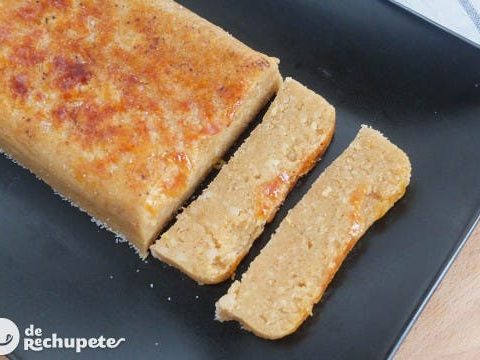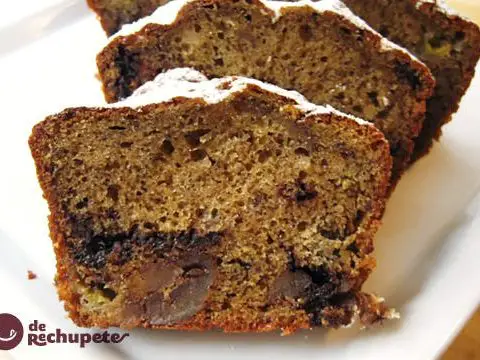
Info.
- Easy
- 90 minutes
- For 10 people
- € 0.3 / person
- 302kcal per 100g.
How to prepare ready Donuts from San Isidro .
The celebration of San Isidro is approaching, a Madrid festival in which traditional sweets cannot be absent, among them the famous donuts of San Isidro .
You have recently seen the special recipes from San Isidro published , where he made a short summary of the most traditional dishes of Madrid cuisine. Among them, the silly donuts but of course you have asked me for the ready donuts .
Surely you already know them, but for those who have not had the opportunity to try them in the San Isidro meadow, I leave you with the different types of donuts, the base of silly donuts and then make the ready donuts, various types of donuts, the of Santa Clara and the French.
Ready-made donuts are characterized by their lemon-flavored icing, somewhat more elaborate than silly donuts that are only painted with eggs.
The silly donuts are usually more insipid but the lists are loaded with sugar icings type merengue.
The origin of this type of donuts is due to La Tía Javiera, its creator, confirmed in her weekly column by Jacinto Benavente on May 10, 1950:
” Perhaps no candy can offer so much variety in flavor, size and appearance […] The Saint’s calls are of three kinds: the dumb ones, those of Fuenlabrada or yolk; and those of Villarejo de Salvanés, or of Aunt Javiera, who made her name and that of her town famous by donuts. Because my father was a medical doctor in Villarejo de Salvanés and because my mother was from there, I have had full news of the real Aunt Javiera and her descendants […] When I was born, Aunt Javiera no longer existed, who, in effect, he had left no aunts or nieces, but he had a second niece who came to Madrid every year for San Isidro and had his place with the most legitimate donuts from Villarejo and Tía Javiera . ”
La Tía Javiera still parades in the shape of a papier-mache head through the streets of Madrid between parades and folk dances.
With what the history of Javiera and his donuts has been present forever, and this little paragraph is worth to pay him his well-deserved tribute.
I leave you with the preparation of these simple donuts so that you can make them at home and enjoy them with yours. Long live San Isidro!
Preparation of the ready donuts from San Isidro
- We begin beating the eggs with the sugar in a bowl until the mixture foams. Add the oil, salt, liquor and finely crushed anise (we can do it with the mortar) and mix well.
- We add the flour (in this case it was pastry, but a loose wheat flour is also worth it) and the chemical yeast. We begin to work them until they form a uniform mass. Let the dough rest in a floured and covered bowl, about 1 hour.
- The dough should be soft, but it should barely stick to the fingers.
- On a work surface we are dividing the dough into small portions, about 40 g. each and forming cylinders with their hands.
- If necessary we can lightly grease the work surface and hands to facilitate the process. We shape the donuts and place them in a dish suitable for the oven.
- The donuts should be left to stand raw for approximately 60 minutes.



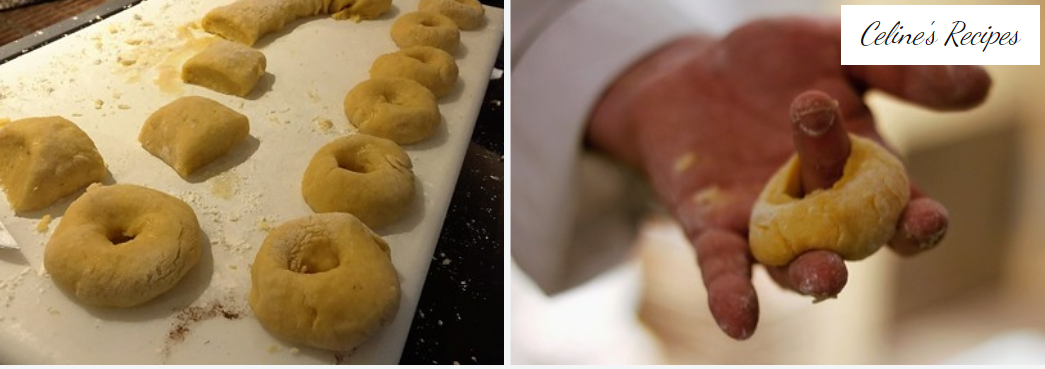
Baking of donuts from San Isidro
- We preheat the oven to 220º C.
- We line one or more baking sheets with baking paper or waxed paper.
- We paint the donuts with egg and put them on the tray with a little separation, they do not grow much but we do not want them to stick to each other.
- Bake the donuts for 12-13 minute batches on the cookie sheet with heat up and down and hot air. We withdraw when we see that they are golden.
- It is common and characteristic for donuts to crack their surface during baking. Depending on personal taste, they can be allowed to cook more or less so that they are toasted or white.
- The baking time is indicative, it depends on each oven and the size of the donuts. Before finishing it is preferable to take out a donut and cut it in half to check that it is well baked.
- We remove the donuts from the oven and let them cool on a rack before consuming them.

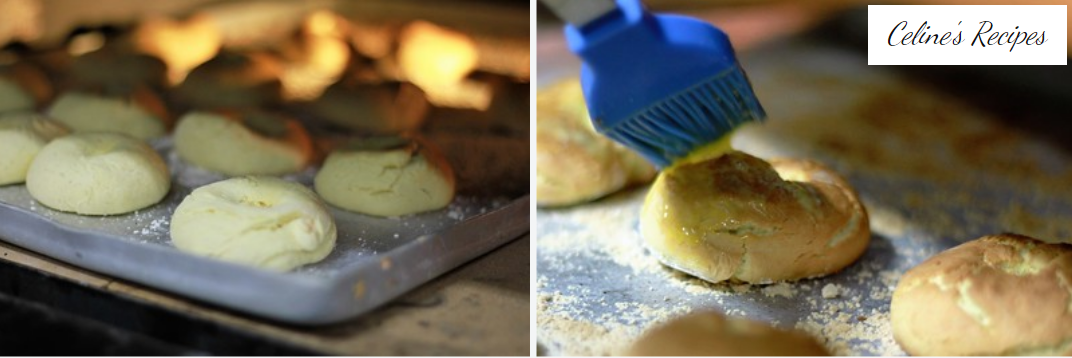


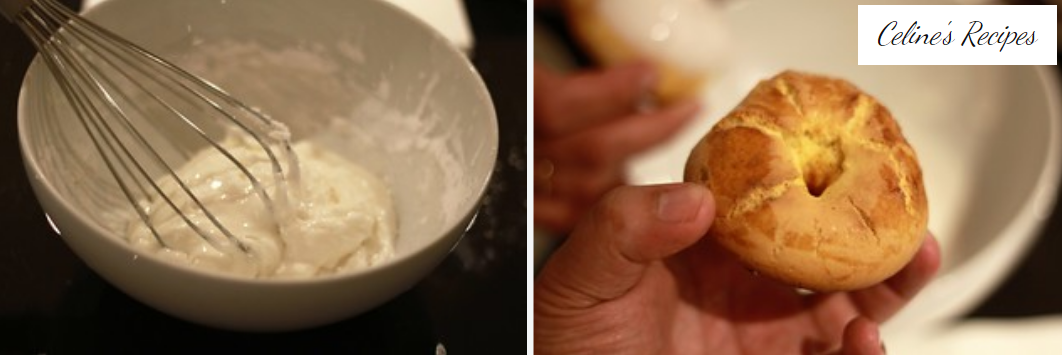


Icing and decoration. Final presentation of the San Isidro donuts
- We prepare the bath or glaze, we put the icing sugar in a container that is comfortable for you and then bathe the donuts.
- Beat the egg whites in a bowl until they rise a little, the icing sugar and the lemon juice.
- If the mixture becomes too thick, add a few tablespoons of water. Pour it little by little until you get a texture similar to a béchamel. If we want to pronounce the lemon more, we can add aroma.
- We are passing donut to donut, putting them halfway in the meringue and let them air dry.
- The natural glaze will be a little liquid. We must let the ready donuts from San Isidro dry for a few hours.
- If you want them to dry quickly, you can put them in the oven at 50 ° C for a couple of minutes. When the bath is dry and crispy they will be ready to eat.
- We can also choose the toping that you like the most. Sprinkle on top when the frosting is dense and liquid, before drying.
- Even if you like colors you just have to add food coloring.
- Having used lemon juice, the most suitable is yellow, but in terms of decoration … you decide! Decorate them to your liking.
In this simple way we would have silly donuts. They are also the base to prepare the lists (with icing), those of Santa Clara (with dry meringue) or the French ones (with almonds).
With little effort we can enjoy a traditional Madrid sweet.
You can see all the photos of the step by step recipe of the ready donuts from San Isidro in this album, do not miss any detail and it will be perfect.
Ideas for a very Madrid San Isidro day
- Perfect for an afternoon with the children and to celebrate San Isidro or just for the sake of it. Easy to prepare, cheap and above all personalized to your liking. You will have them entertained all day with their donuts.
- I am sure that these donuts will be the sweet spot for the most traditional tapas in Madrid. From a few tripe a la Madrilenian , the oxtail stewed in wine , the Patatas Bravas , the battered cod , the squid a la Romana and of course the grilled ear.




